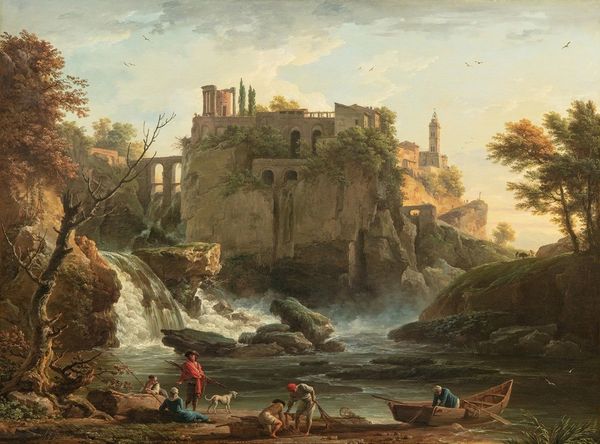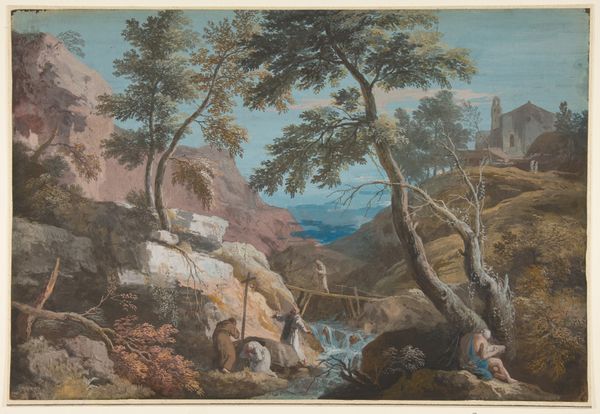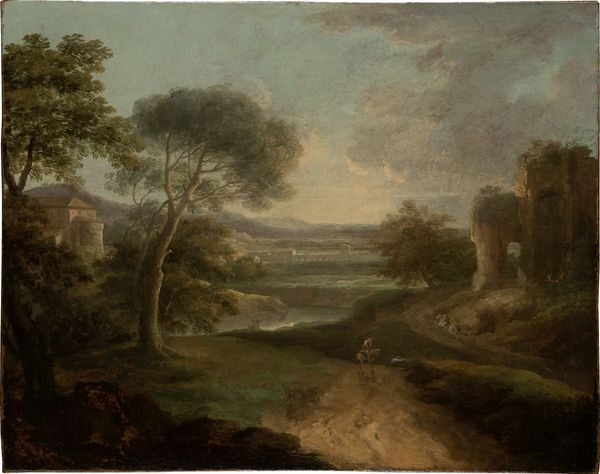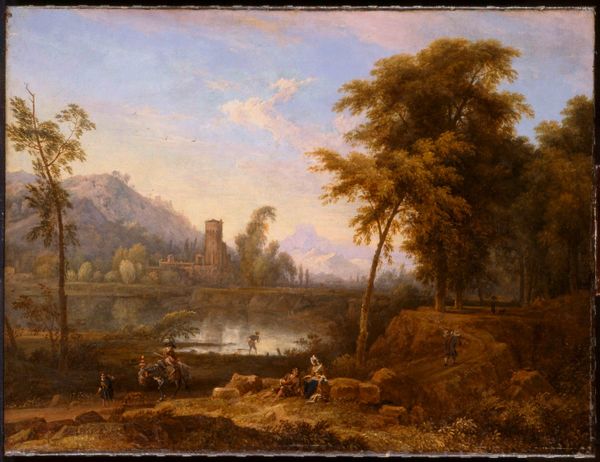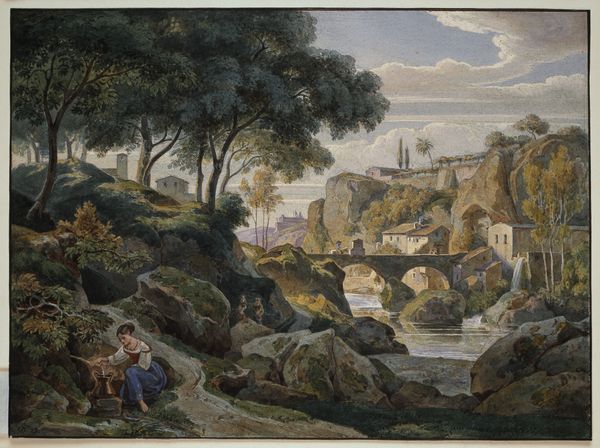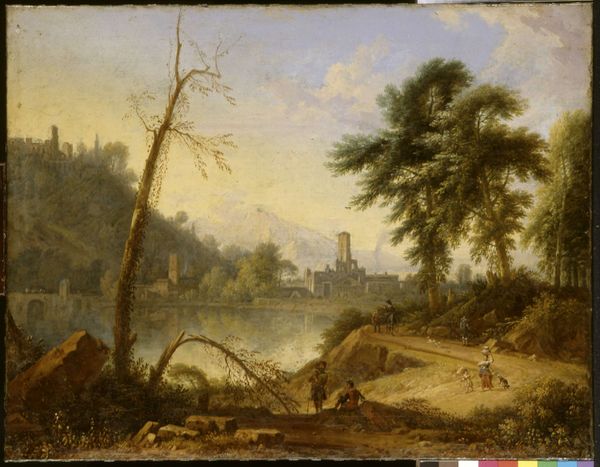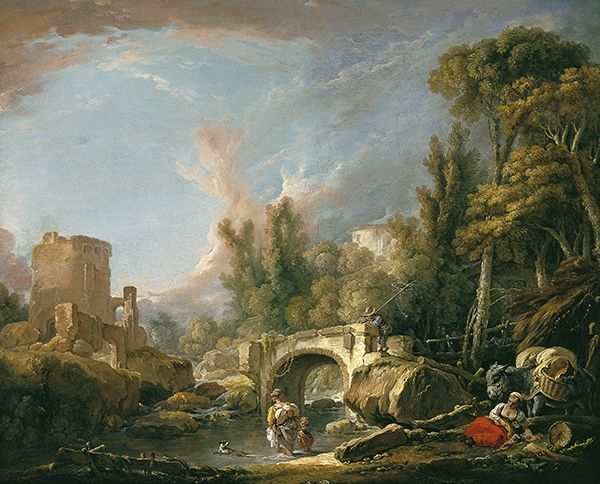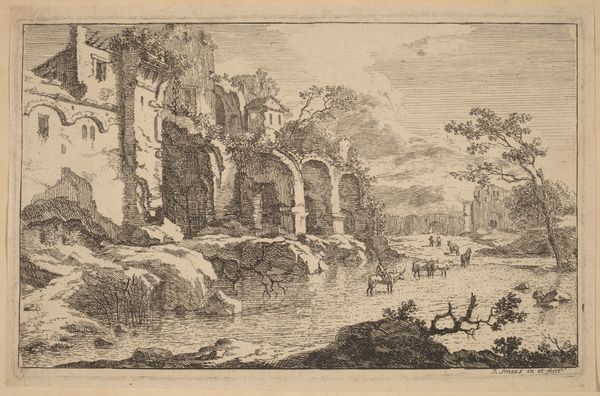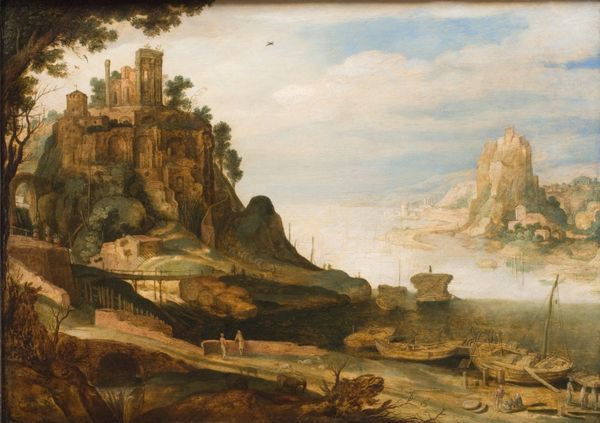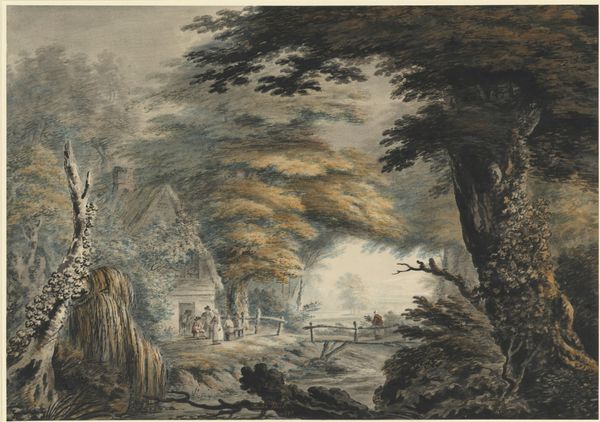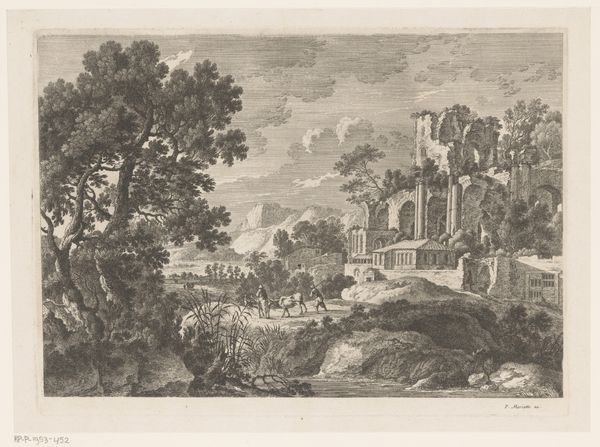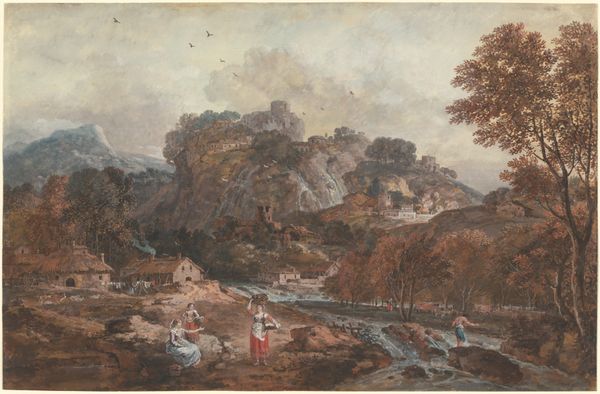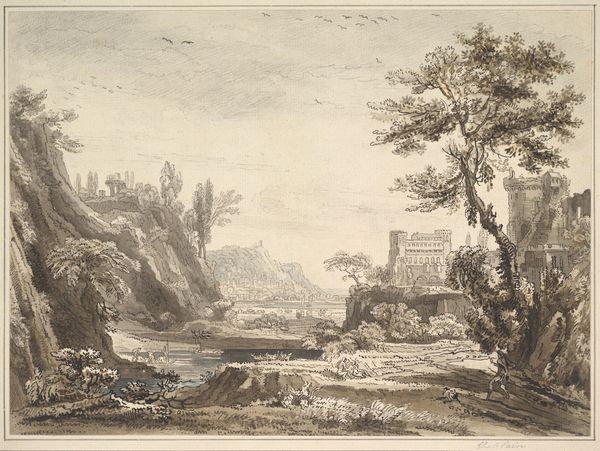
Dimensions: overall: 32.4 x 48.1 cm (12 3/4 x 18 15/16 in.)
Copyright: National Gallery of Art: CC0 1.0
Jean-Baptiste Lallemand made this watercolor and gouache painting, "Dawn Landscape with Classical Ruins," probably in Italy in the late 18th century. The painting exemplifies the period’s fascination with classical antiquity and the picturesque. The image presents a sweeping vista of decaying Roman architecture, now harmoniously integrated into the natural landscape. This vogue for ruins speaks to the 18th-century’s changing attitudes toward history and the rise of archaeology as a discipline. Rather than simply valuing classical antiquity for its own sake, artists and intellectuals began to see it as a mirror for their own time. The rise and fall of empires became a potent symbol. Note the peasants and livestock populating this scene. Lallemand is making a statement about the transience of power and the enduring presence of everyday life. To understand this painting better, one might research the Grand Tour, a popular activity for wealthy Europeans at this time. These tourists often commissioned such views as souvenirs. Ultimately, the meaning of this artwork is tied to the social and cultural context in which it was created.
Comments
No comments
Be the first to comment and join the conversation on the ultimate creative platform.
